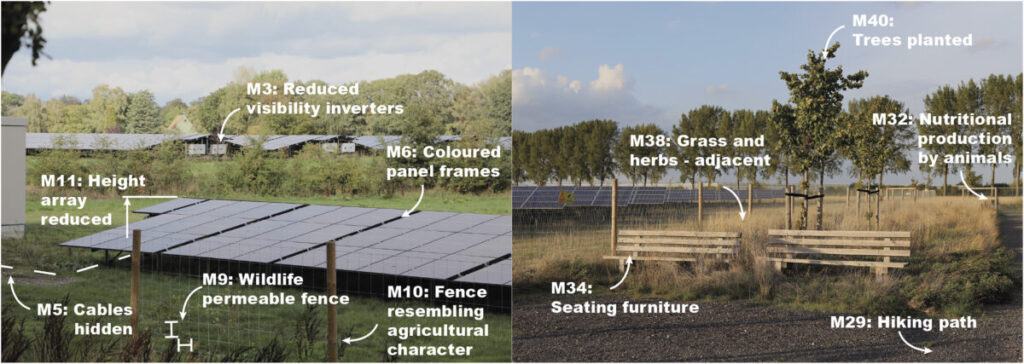Researchers in the Netherlands have identified all major solar power plants in the Dutch province of Gelderland and have analyzed all their spatial measures in an attempt to assess their impact on the landscape. They are specifically aimed at land use competition, biodiversity and landscape experience.
Scientists from Wageningen University and research in the Netherlands have carried out a comparative case study of spatial measures in 46 Dutch solar energy plants (SPPs). The spatial analysis resulted in the identification of 43 types of spatial measures, classified as tackling competition, biodiversity or landscape experience.
“Our comparative case study of 46 built SPPs is intended to document the reach and quantitative size of implemented spatial measures and to identify synergies and considerations between spatial measures used to tackle social problems,” the researchers said. “By finding all embedded cases of this study in the Dutch province of Gelderland, a similar cultural and legal context is provided. This context enables us to make a statement about the status quo of how social concerns have been tackled in SPPs so far.”
The province of Gelderland has a land area of 5,136 km2. The team mentions only SPPs with a generation capacity of 1 MW and more, the team has compiled a list of 46 plants in this area. Various sources were used to put together the list, including online maps of subsidized projects, maps for land use, consultation with experts, professional magazines, newspapers and SPP websites for developers. The spatial analysis of each site consisted of field visits, analysis of pre-construction satellite images, assessment of plan documents and a map study, in which the spatial measures were referred.
According to their analysis, 43 different spatial measures were identified at the 46 locations. The most common measure – found at all locations – was a PV density of less than 75%. The second most common measure, with 39 authorities, included hiding electricity cables under the panels and the ground. In 35 SPPs, the distance between the panels allowed sunlight and rainwater to reach the ground. One PV factory had a bicycle charging point, while two SPPs have created a stone habitat for the boost, nesting and wintry.
Image: Wageningen University and Research, Renewable Energy, CC by 4.0
Regarding the competition for land use, the researcher found that in 59% of the cases the previous position was agriculture, and in 15% of the cases it was a landfill. In 31 SPPs, one or more new functions were introduced in addition to electricity generation. In six cases, one or more measures were identified to support recreational use, while in four cases water retention measures were implemented. The average occupancy ratio of the land area (LAOR) has risen from 30% in 2015 to almost 60% in 2021.
“We have identified 12 measures that focus on tackling loss of biodiversity,” the results also showed. “In 19 of the 29 SPPs (66%) where bushes and trees were present before construction, the vegetation was completely or partially removed. Under these 19 cases, an average of 11.3%of the project surface was released from trees and bushes, with a maximum of almost 55%. SPPS and trees (54%). 9.0 hectares and trees were removed, the planted surface was limited to 5.8 ha, which led to 3.2 ha lost due to the implementation of the 46 SPPS. “
In addition, the Academics have identified 27 measures intended to tackle the experience of landscape users. In 70% of the cases, the stations were completely surrounded by a safety fence, while in the remaining cases the perimeter was defined by surface water, earthworks or buildings. In 72% of the cases, transformers and centralized inverters noticed because they were higher than the PV arroys, and in 26% of the cases the array height was reduced to less than 1.65 m, allowing landscape users to look over the PV modules.
“Our results show that the aforementioned function combinations lead to synergies, while also revealing considerations at specific locations,” the scientists concluded. “An example of such an assessment is the construction of SPPs on landfills, if it requires the removal of existing vegetation. This knowledge is especially important because policy guidelines and scientific studies often frame the combination of PV systems and dumping places, water Stories or Agrivoltaics as a clear victory.”
Their work was presented in “How does Zonne -Energy transform landscapes? A comparative spatial analysis of 46 built solar energy plants in the NetherlandsPublished In renewable energy.
This content is protected by copyright and may not be reused. If you want to work with us and reuse part of our content, please contact: editors@pv-magazine.com.
Popular content


